SEEDING YOUR LAWN
FALL LAWN SEEDING
When you think lawn seeding, spring may be the first thing that comes to mind. But the warm soil temperatures and cool nights of late summer and early fall actually mean now’s the best time to seed your lawn! Planting now without the stress of summer heat means your lawn seed has enough time to establish before the winter’s first frost. Here’s a checklist of our favorite products to help you renovate the lawn with seed
SOIL PREP
Now’s the best time to prep your soil. Loosen your soil on the top inch or so and get the grade you want. It’s also a great time to add more top-soil or compost if needed. The better your soil is, the healthier your lawn will be.
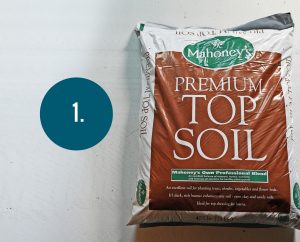
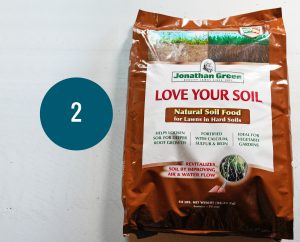 So, how much soil do you need? Well that depends on your conditions. Keep in mind here that your turf success is really just a result of your soil quality. The stronger your root system is in deep, healthy soil- the better your new seed will perform. I put down up to 10 inches of compost and loam when I redid my back yard and it shows in times of summer drought. This summer, my lawn stayed green while others dried out. It is deeply rooted and healthy enough to withstand stressful conditions. Use a quality top soil or compost to amend your existing conditions. If your soil is of good quality, just till and loosen the top couple inches and rake out a good grade.
So, how much soil do you need? Well that depends on your conditions. Keep in mind here that your turf success is really just a result of your soil quality. The stronger your root system is in deep, healthy soil- the better your new seed will perform. I put down up to 10 inches of compost and loam when I redid my back yard and it shows in times of summer drought. This summer, my lawn stayed green while others dried out. It is deeply rooted and healthy enough to withstand stressful conditions. Use a quality top soil or compost to amend your existing conditions. If your soil is of good quality, just till and loosen the top couple inches and rake out a good grade.
One other great product that I always recommend is Jonathan Green’s, Love Your Soil. It’s a cool organic product that stimulates microbes in the soil and helps to loosen heavy, hard packed soils, to release trapped nutrients. It’s a good preparation amendment so your soil can better stimulate root growth for your new seeding.
SOIL TEST
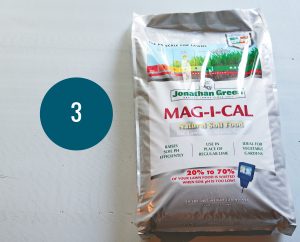 If there’s ever a time to test your soil- it’s now. Even if you are only testing the pH. You can get an extensive test through our own lawn-care service, Safe Lawns, or the UMass Extension (for a fee). Or you can do a basic, at-home test yourself.
If there’s ever a time to test your soil- it’s now. Even if you are only testing the pH. You can get an extensive test through our own lawn-care service, Safe Lawns, or the UMass Extension (for a fee). Or you can do a basic, at-home test yourself.
The soil test will tell you your lawns pH, nutrients and soil structure. I find the most important right now is to test pH levels. You see, if your soil has a low pH– your fertilizers won’t work as well. The best way to explain this is if your soil is too acidic you can’t derive the iron and magnesium naturally occurring in your soil so your lawn will never get to that dark green color everyone wants. To adjust your pH into the desired neutral area, add Jonathan Green’s MAGI-I-CAL or lime.
SEED
Now you want to add the seed. Make sure you pick a seed that’s good for your sun requirements and make sure you have a good quality seed.
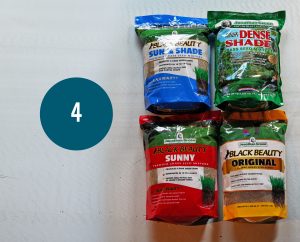 Your grass seed is more important than most people think. Cheap grass seed is just that, cheap and we can’t in good faith carry it. You see, varieties of grass seed get old and are replaced as better seeds become available. This makes the older seed cheaper than the newer, better performing ones. Another way to get cheap seed is to add annual blue grass to the mix. Annual blue grass is an inexpensive filler, but it doesn’t come back the next year making it a turf that comes up well initially, but then your lawn comes in very thin next spring. Cheap grass seed is like a cheap beer only that headache you get is going to last for years.
Your grass seed is more important than most people think. Cheap grass seed is just that, cheap and we can’t in good faith carry it. You see, varieties of grass seed get old and are replaced as better seeds become available. This makes the older seed cheaper than the newer, better performing ones. Another way to get cheap seed is to add annual blue grass to the mix. Annual blue grass is an inexpensive filler, but it doesn’t come back the next year making it a turf that comes up well initially, but then your lawn comes in very thin next spring. Cheap grass seed is like a cheap beer only that headache you get is going to last for years.
It’s also important to pick the right seed for your sun requirements. You don’t want to take a full sun blend and put it in the heavy shade areas. Use the right seed for the right sun. Jonathan Greens dense shade will do great under those trees down to about 3 hours of sun. Don’t forget grass seed does need about 3 hrs of sun to grow or it will just slowly fade away. Sometimes shrubs and perennials do better for those heavy shade areas.
Fertilizer
Y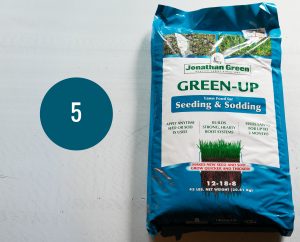 es fertilizer. It makes a huge difference and it seems like everyone wants to either skip this step or add it later. Whether organic or synthetic, add fertilizer when you seed.
es fertilizer. It makes a huge difference and it seems like everyone wants to either skip this step or add it later. Whether organic or synthetic, add fertilizer when you seed.
Fertilizers are meant to release phosphorus into the soil at time of germination and then add nitrogen in a slow release fashion thereafter to continue feeding. Don’t mix seed and fertilizer. It doesn’t matter which one goes first or second but add one and then put the other down and water.
WATER
The rest is up to you! Be sure to keep your new seed evenly moist in the beginning because if you let grass seed dry out too much, it may prolong the germination or even worse– kill the seed during germination. This first week is very important, after that you can back down to a deep water every 2- 4 days depending on the weather forecast.
.

